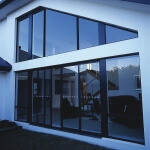
Standard Colours for Windows and Doors
There are 8 standard Colours:
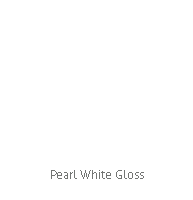 |
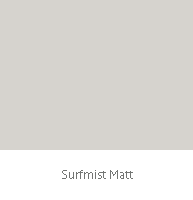 |
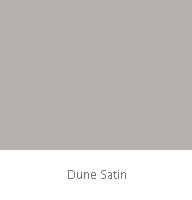 |
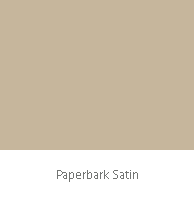 |
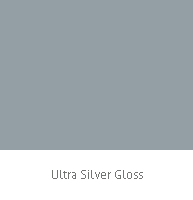 |
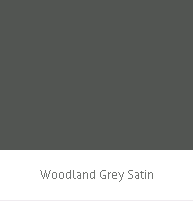 |
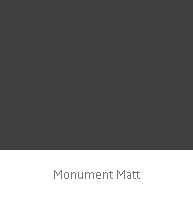 |
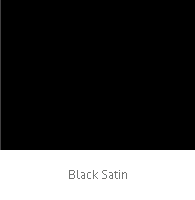 |
PLEASE NOTE: These colours are indicative only and may not exactly reflect their true colour due to differences in screen calibration.
Special Colours
There is a large selection of special colours from which to choose. You can choose almost any colour from the Interpon colour range.

Below are some of the popular special colours:
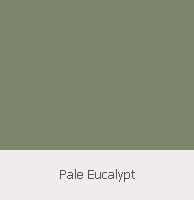 |
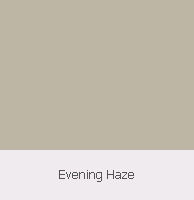 |
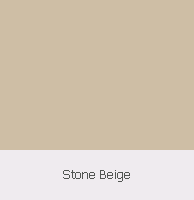 |
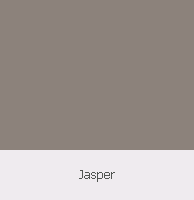 |
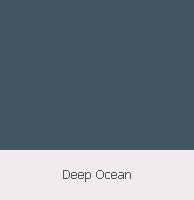 |
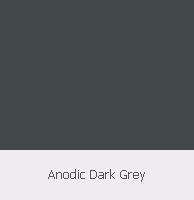 |
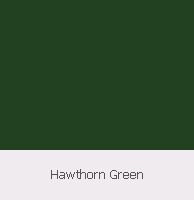 |
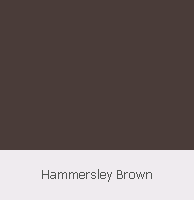 |
PLEASE NOTE: These colours are indicative only and may not exactly reflect their true colour due to differences in screen calibration.
Want to see more colours? Here is a link to the “Color for Living Range” on the Interpon website. This range is appropriate for residential purposes.
Specify Interpon » Interpon D1000 Color for Living Range
Introduction
The thickness and type of glass used in windows and doors are generally determined by design criteria, performance and building codes.
Most standard residential windows are fitted with clear float glass, in thickness ranging from 3-5mm. In some instances, such as in bathrooms, stairwells, or where a large window can be mistaken as a door opening building codes require toughened glass to be used.
Doors are generally fitted with 4 or 5mm clear toughened glass.
Types of Glass
The correct choice of glass can assist you to maximise natural light while minimising heat and glare, or reducing heat loss during winter. Correct glass also helps to: reduce energy bills, improve security, reduce UV fading of furnishings and reduce noise.
Glass options for your windows and doors include:
| Float | The most common type of glass. When broken it shatters into slivers. |
| Toughened | Grade A safety glass. Heat treated for extra strength. When broken it breaks into small granules. |
| Laminated | Grade A safety glass. Float glass separated by a special membrane, giving extra strength. When broken, the membrane holds the glass together. Laminated glass lowers the UV transmission and reduces noise. |
| Toned | Grey, green, bronze, dark grey, super green. Toned glass is used to reduce heat transfer and glare. The glass absorbs the heat then radiates it both ways. |
| Obscure | Obscured glass is used for privacy, most commonly in bathrooms and toilets. There are several types of obscured glass you can choose: Satinlite (standard obscured glass) and Satina (Opal acid etch) are the most popular obscured glass. |
| Smart Glass | Smart glass has a low E coating on the internal face of the glass. This glass is used for insulation purposes. The heat or cold is reflected back. Smart glass comes in clear, neutral or grey. Smart glass can be toughened. |
| Comfort Plus | Comfort plus is a laminated glass with a low E coating. |
| Double Glazed | Double glazed windows have 2 pieces of glass separated by an air pocket for superior insulation. We do not sell double glazed products. For insulation, consider using Smart Glass or Comfort Plus as an alternative. |
Introduction to Reveals
The Reveal is a timber surround fitted to the fin of the window or door and used for installing the product into timber framing. The reveal becomes the frame of your window or door covering the stud. The architrave attaches to the reveal to cover the gap between the reveal and the plasterboard (or internal lining). A variety of reveal sizes are available depending on your construction.
The size of the reveal is the combined width of the timber stud, the internal lining and cavity (for brick veneer).
Reveals for External Cladded Applications
This is relevant for timber cladding, blue board cladding or any other type of cladding up to 25mm thick.
Reveal Size = Internal lining (say 10mm) + Stud Size (say 75mm) = 85mm (use closest standard size 86mm)
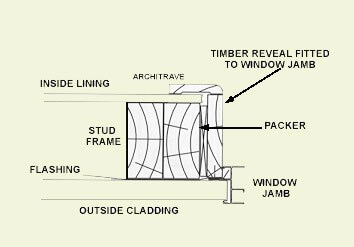 |
|
Diagram 1: Window with reveal for External Cladded Applications |
If bracing ply is used, you will need to add the thickness of this to the reveal size.
Reveals for Brick Veneer
Reveal Size = Internal lining (say 10mm) + Cavity (say 35mm) + Stud Size (say 75mm) = 120mm (use closest standard size 116mm)
 |
|
Diagram 2: Window with reveal for Brick Veneer Application |
Standard Size Reveals
Refer to the chart below for reveal sizes for external cladded applications and brick veneer.
| External Cladding | |
| Stud Size (mm) | Reveal Size* (mm) |
| 70 | 81 |
| 75 | 86 |
| 90 | 98 |
| 100 | 110 |
| Brick Veneer | |
| Stud Size (mm) | Reveal Size^ (mm) |
| 70 | 116 |
| 75 | 116 |
| 90 | 138 |
| 100 | 138 |
Note: 138mm is the largest standard reveal size available. 105mm is also a standard size.
* Based on 10mm internal lining.
^ Based on standard brick veneer construction with 10mm internal lining.
What is the alternative to using Timber Reveals?
You may not need reveals on your windows and doors. If you have a finished opening (often when removing an old window the finished opening will still be in place), you can slot the window into the opening and screw it into place through the jambs. You can then simply silicon around the outside of the product or use some angle to cover any gaps.
Windows and doors come with an aluminium fin attached. For this type of installation, the fin can be removed either by us or by yourselves on site.
Things to remember
When ordering a product, you are ordering the size to the outside of the aluminium. Make sure you specify if it is the product size, the overall size or the stud opening size that you have measured.
Many products can be coupled together to create the look and functionality required. The options are endless. See our staff for what is achievable.
| Vent Lock * | * For sliding windows only *
A vent lock is a lock that pushes down into the sill of the sliding window (or transom on a patio unit) to allow the sliding sash to be locked in an open position. The vent lock has 3 positions:
The vent lock is ideal for extra ventilation with the added peace of mind that your window is still locked. |
| Patio Bolt ^ | ^ For sliding doors only ^
A patio bolt is an internal lock that attaches to the top of the sliding sash. A rod is pushed up into a hole in the head of the door to give extra security when the door is in the closed position. The patio bolt can also be locked with a key. The door cannot be opened from the outside when the patio bolt is engaged. The patio bolt is ideal for those who are security conscious. It can also be used to fix your sliding sash into an open position in a similar fashion to a window vent lock. |
Selecting your windows and doors
Windows and doors are an integral part of the structure of your home. They provide light, ventilation and for doors, access to your home. And they greatly influence the comfort of your home by their effect on heating and cooling. Furthermore, they also add visual appeal.
We urge you to thoroughly research your windows and doors. Too often we find that people leave it too late and choose their window and doors in haste, only to find later that they could have made a better choice. Once the house is built it is too late to make changes!
While making your decision on windows and doors, consider the following:
| Ventilation | How much ventilation do you require? Where do you want the window to open? Centre or side opening; top and bottom opening; hinged or louvre air flow control. |
| Style of window | What style of window do you like? What shape is your opening? Sometimes the opening size will lend to a particular style of window. For example a tall, skinny opening suits a double hung or louvre window best. |
| Lighting | Do you need tinting to reduce glare or heat? |
| Noise | Is noise a factor? If it is, consider thicker glass or laminated glass. |
| Safety | Do you need safety glass? Do you need to restrict your openings? |
| Screening | Do you need fly or security screens, now or in the future? |
| Locking | All of our products come with keylocks. Consider triple locks for screen doors or vent locks for sliding windows. |
| Colour | There are a wide range of powdercoat colours to choose from. What finish would you like? Fashions come and go. Perhaps an enduring, neutral colour might be best. Standard colours are less costly. |
| Installation | How will the windows / doors be fitted? Are reveals required? |
| Standard Sizes | If your construction allows, select standard size windows and doors as these are less costly. |
Ordering your windows and doors
When ordering your windows and doors, we will ask you a number of questions so that we can fully understand your requirements. We suggest you consider the following prior to ordering:
| Style of window | Sliding, double hung, casement, awning, louvre etc. |
| Direction of opening | When discussing the configuration of the window or door, it is always viewed from the outside. |
| Size | The size is expressed as height x width in mm.
Note that this is the aluminium frame size. You need to allow for reveals if you are having them. Add 40mm to the height and width of windows and 40mm to the width of a door and 20mm to the height of a door (as there is no sill reveal on a door). You also need to allow clearance when fitting into a timber stud. This is usually 10mm. For example, a 1200mm x 1500mm window with reveals will need a stud opening of 1250mm x 1550mm. |
| Wind Rating | You need to check with your council for your wind rating. Generally, in the Brisbane metro area the window rating is N2. |
| Type of glass | What type of glass would you like in your windows and doors. Clear, obscure, tint, toughened? Safety glass is required in wet areas or stairwells. Make sure you tell us where the window is going so we can help make sure you comply with the Australian Standards. |
| Reveals, fins on or off | What size reveals do you require?
If you are fitting your window into a prepared, finished opening, then you can order the window to be definned. Just be careful if you are ordering this, as fins cannot be put back on once removed. |
| Colour | There are 8 standard colours to choose from. |
| Screens | Do you require screens to suit? |
| Collect or delivery | Would you like to collect the products from Window Warehouse, or have them delivered to your place? A delivery fee applies. |
Standard Colours for Windows and Doors
There are 8 standard Colours:
 |
 |
 |
 |
 |
 |
 |
 |
PLEASE NOTE: These colours are indicative only and may not exactly reflect their true colour due to differences in screen calibration.
Special Colours
There is a large selection of special colours from which to choose. You can choose almost any colour from the Interpon colour range.

Below are some of the popular special colours:
 |
 |
 |
 |
 |
 |
 |
 |
PLEASE NOTE: These colours are indicative only and may not exactly reflect their true colour due to differences in screen calibration.
Want to see more colours? Here is a link to the “Color for Living Range” on the Interpon website. This range is appropriate for residential purposes.
Specify Interpon » Interpon D1000 Color for Living Range